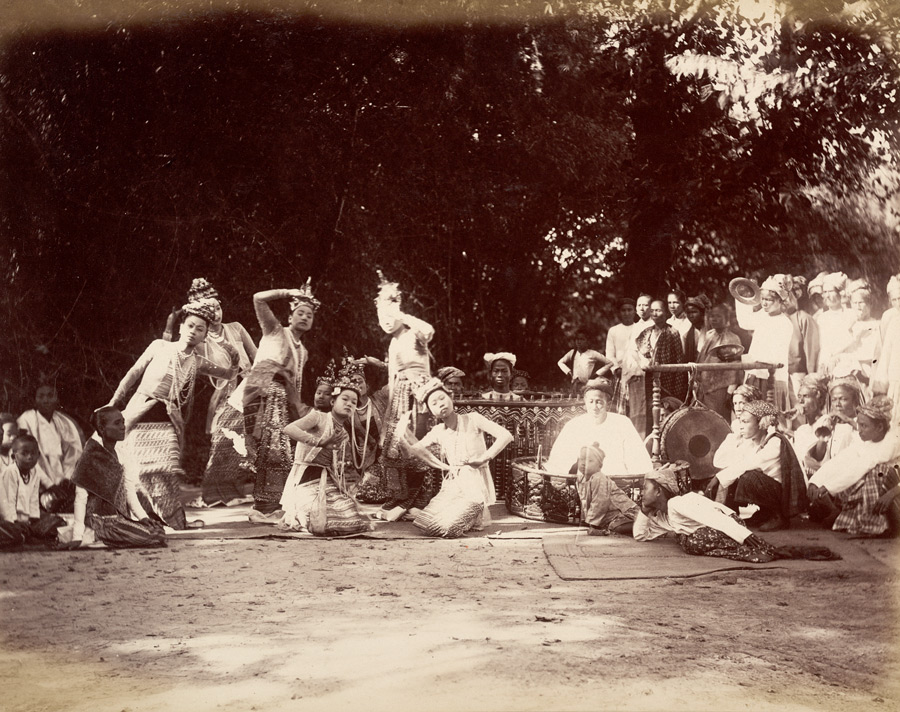
March 16, 1899, a sunny morning, and you’ve rocked up to a pagoda festival where a crowd is mesmerized by flashes of flowery headdresses and supple movements.
It’s the headline act of the day, a mix of music, dance and drama meshed in the Burmese theatrical tradition known as pwe—meaning ‘festival’ or ‘fair’.
Performed throughout the countryside by travelling troupes during the dry season, often in the open air, the vibrant tradition has been around for hundreds of years.
In the mid-19th century its inclusion of classical drama boosted its popularity, with performers adorned in elegant costumes, jewels and garlands of necklaces, waving fans to accentuate their dancing.
The pwe performance has adapted with the times and remains a fixture at some festivals, its blend of myth and folk tales, comic improvisation, dancing and sometimes more serious narratives drawing on Buddhist themes still proving a hit in the 21st century.
Its heyday is shown in this vintage photo gallery, that, thanks to the National Archives UK digitizing its collection, we can all enjoy.
The gallery includes work from our old friend Philip Adolphe Klier and even a stereoscopic view of the performers—the 3D tech of its time.

